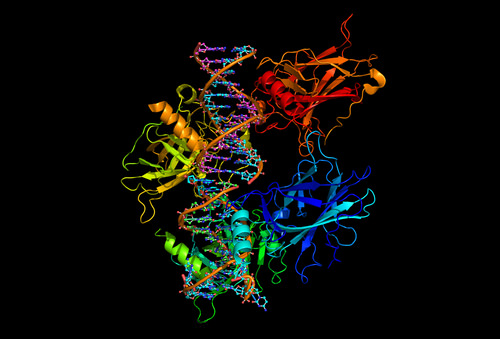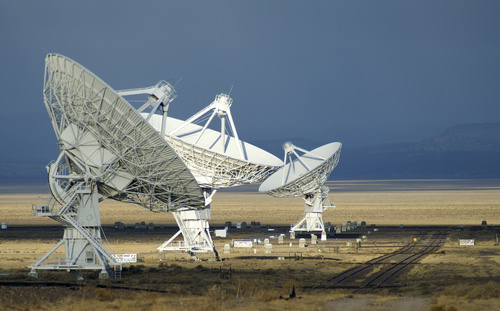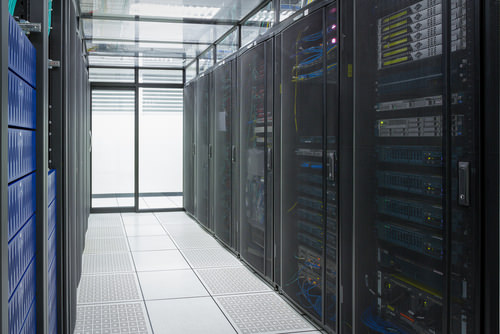
Should you mine for profit or proteins?
As ASIC miners begin pushing GPU users off the Bitcoin network, could they use their rigs to battle Alzheimer’s disease and cancer? One academic hopes to pick up some spare computing power from cryptocurrency miners and put it to good use.
Stanford University professor Vijay Pande would like coin miners’ help with his scientific project, Folding@home, which uses donated computing power to help find cures for devastating diseases. He also helps run the Stanford Bitcoin Group, which conducts research into Bitcoin theory and applications.
"There are multiple people emailing me describing the natural synergies between Folding@home and the way Bitcoin works," he said.
Crowdsourced scientific computing emerged in the early 2000s, scientists realized that lots of spare computing capacity was sitting dormant, and that those computers were now connected via the Internet. They developed software to distribute computing tasks between many distributed machines, which could work on pieces of them concurrently, contributing to a bigger goal. At the time, people called this concept grid computing.
One of the first grid projects was Seti@home, a UC Berkeley project released in 1999, a year before Folding@home. That project used peoples’ computers to analyse signals picked up by radio telescopes to see if they could find patterns indicating signals from intelligent life.

prot3
But whereas Seti@home looked to the heavens for answers, Folding@home looked inside the body. The distributed computers used by Folding@home are simulating proteins. Proteins must assemble themselves (fold) before they can do their jobs. When they do not fold correctly, they can contribute to diseases including Alzheimers, Parkinson's, and AIDS.
The Folding@home project uses computing power to better understand how proteins misfold themselves. This can give researchers a better chance at designing drugs and other therapies to fight the resulting illness - and it's working.
“Our primary disease interest has been Alzheimers, and we have a drug candidate that we're now starting to work on,” said Pande. The group has also put in place some pilot projects to research cancer. “Now that computers have got more powerful we can go after certain kinases,” he says. These are enzymes that send messages between cells, and modify specific protein behaviours. Cancerous cells can warp a kinase’s messaging, leading to misbehaviours in proteins.
Current chemotherapy takes the nuclear option to stopping these faulty kinases. “The reason why chemotherapy is so nasty is that it doesn’t shut down just one kinase, it shuts down many of them, and that will lead to all of these nasty side effects,” Pande said. “We’re pushing to design drugs that are selective, so that you could kill the cancer at higher doses, but not have these nasty side effects that almost kill the patient at the same time.”

prot4
But to do that, he needs computing power. The more, the better. Bitcoin and crowd sourced calculation projects such as Folding@home both make use of heavy floating point calculations, which GPUs are very good at. And like Bitcoin, Folding@home is able to use GPU power from across the Internet.
Unlike bitcoin mining, which measures computing in hashes, these scientific projects concentrate on floating point operations per second (FLOPS). Today, Folding@home has access to the equivalent of around 14 x86-based Petaflops. Allowing for the fact that people don't run the Folding@home software all the time, and some machines are less powerful than others, he estimates that this is the equivalent of 20,000 GPUs out in the field.
"If we could get 100,000 GPUs, then that could easily be a 5 to 10 fold increase," says Pande.
Couldn’t the bitcoin network spare a few flops? Back in May, we reported that the network had hit over a thousand Petaflops. In a little over three weeks, it has hit over 14,000 Petaflops – a thousand times Folding@home’s current rate. ASICs don’t deal in flops, so that calculation won’t be entirely accurate, but then, as more ASIC rigs mine for bitcoins (which is the only thing they are built to do), they will push out GPUs anyway.

prot5
Those GPU owners might decide to turn their attention to protein folding, but it’s equally likely that a lot of them will switch to mining other currencies, such as Litecoin. There are more altcoins every week, it seems, beckoning people to mine them for potential long-term profit.
Ultimately, as one bright spot on a Reddit thread suggested, someone would develop a crypto currency that could solve scientific problems during the mining process – effectively solving problems for professors while also finding coins. This is much harder than it looks, warns Pande.
“The dream is to come up with a proof of work function that could be useful for science,” he says. “That's challenging to do, because it has to be something that we care about that is difficult to compute but easy to verify.”
It is hard to combine these three factors – scientific relevance, difficulty of calculation, and ease of verification. “The last two are easy with hashing, the first two are easy with our research. But the verification part is hard to do.”
In the meantime, Stanford is relying on two things to motivate participants: firstly, simply being a stand-up human being. Secondly, gamification.
The problem with projects like Folding@home is that the rewards are longer term, and more difficult to quantify. Conversely, the returns for crypto currency miners are tangible, and frequent. Human beings like fast, simple rewards. The Stanford team has tried to motivate participants by awarding points for work units completed. It invites people to create teams that compete with each other across the globe. Although they did this long before Satoshi wrote his paper, we can liken it vaguely to a mining pool.
Is there a way to marry this quest for profit and protein? It seems unlikely that people would be able to trade the work units completed by Folding@home participants and start giving them value relative to a currency, because there is no supporting verification and tracking capability to exchange them.
Perhaps someone might see fit to develop superior mining software that also allows GPU users to divide their processing time between cryptocurrency mining and scientific projects such as Folding@home. Then, they could give some of their GPU time to a good cause while also mining for coins, with minimal effort.
DISCLOSURE
The leader in news and information on cryptocurrency, digital assets and the future of money, CoinDesk is a media outlet that strives for the highest journalistic standards and abides by a strict set of editorial policies. CoinDesk is an independent operating subsidiary of Digital Currency Group, which invests in cryptocurrencies and blockchain startups. As part of their compensation, certain CoinDesk employees, including editorial employees, may receive exposure to DCG equity in the form of stock appreciation rights, which vest over a multi-year period. CoinDesk journalists are not allowed to purchase stock outright in DCG.

